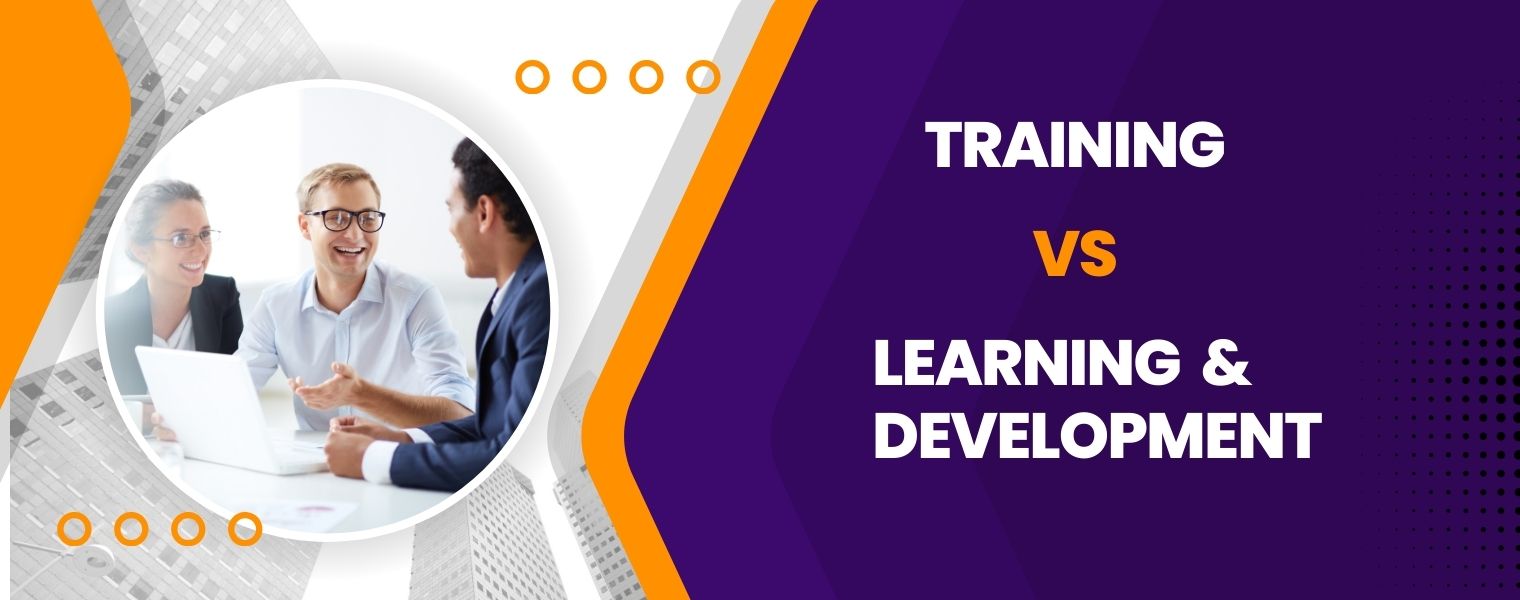
08 Nov Training VS Learning & Development
Understanding the Difference Between Training and Learning & Development
In today’s rapidly evolving professional landscape, organizations are increasingly recognizing the importance of investing in the growth and development of their employees. Two key components of this process are Training and Learning & Development (L&D). While these terms are often used interchangeably, they represent distinct approaches to enhancing employee skills and knowledge. This article aims to clarify the differences between training and learning & development and shed light on their respective roles in fostering a productive and skilled workforce.
Training: A Focused Skill-Building Approach
Training is a targeted and systematic process aimed at equipping employees with specific skills or knowledge required to perform their current job roles effectively. It is typically structured around predefined objectives, with a clear focus on immediate performance improvement. Training programs are designed to be practical, hands-on, and often involve structured modules or courses.
Key Characteristics of Training:
Specificity: Training is tailored to address specific skills or knowledge gaps relevant to an employee’s current job role.
Short-term Focus: It is primarily concerned with achieving immediate performance improvements.
Skill Acquisition: Training programs are designed to impart specific skills or knowledge necessary for executing job tasks proficiently.
Standardization: Training often follows a standardized curriculum or set of modules to ensure consistency in learning outcomes.
Examples of Training Programs:
Onboarding programs for new employees to familiarize them with company policies, procedures, and tools.
Technical skills workshops to enhance proficiency in using specific software or equipment.
Compliance training to ensure adherence to industry regulations and organizational policies.
Learning & Development (L&D): A Holistic Growth Strategy
Learning & Development encompasses a broader and more comprehensive approach to employee development. It is a continuous process that focuses on nurturing individual and organizational capabilities to adapt to future challenges and opportunities. L&D aims to foster a culture of lifelong learning, enabling employees to not only excel in their current roles but also prepare for future career advancements.
Key Characteristics of Learning & Development:
Holistic Approach: L&D addresses not only immediate skill-building but also encompasses personal growth, leadership development, and long-term career progression.
Long-term Perspective: It is oriented towards building a sustainable and adaptable workforce capable of meeting evolving organizational needs.
Individualized Learning Paths: L&D recognizes the unique strengths, interests, and aspirations of each employee, tailoring development plans accordingly.
Emphasis on Soft Skills: In addition to technical proficiency, L&D places importance on nurturing soft skills such as leadership, communication, problem-solving, and adaptability.
Examples of Learning & Development Initiatives:
Leadership development programs aimed at grooming high-potential employees for future leadership roles.
Personalized learning plans that incorporate a mix of on-the-job experiences, mentoring and formal education to support individual career aspirations.
Workshops on emotional intelligence, effective communication, and other interpersonal skills to enhance overall professional effectiveness.
Conclusion
In summary, training and learning & development represent distinct but complementary approaches to employee development. Training is focused on immediate skill acquisition for current job roles, while learning & development takes a more holistic, long-term perspective, nurturing both technical and soft skills for future growth and adaptability. By recognizing the unique strengths and needs of employees, organizations can create a balanced development strategy that maximizes individual and organizational potential. Ultimately, a well-rounded approach that combines training and learning & development is crucial for building a skilled and agile workforce capable of thriving in today’s dynamic business environment.
